Avalanche Blockchain - Crypto Academy / S5W8 - Homework post for pelon53
Explain in detail X-Chain, C-Chain and P-chain.
Blockchain technology has dominated the tech space because of it's versatility, features like security, transparency, accountability, audibility, anonymity etc. Different blockchains have evolved from time to time and each of these claims to have entered the tech space with some novel features than the predecessor blockchains. Without dodging too much, let's come to avalanche blockchain.
Scalability is the main problem with some versatile blockchains like Bitcoin and Ethereum. Avalanche blockchain was designed to tackle the issue of scalability by integrating multiple blockchains in it. Avalanche is comprised of 3 blockchains intended to perform different functions and collectively collaborate to ensure the integrity of the avalanche network. The blockchain technologies are X chain, C chain and P chain.
X-chain:- Xchain is the short form of exchange chain. As the name implies, Xchain is programmed to ensure the smooth creation of new tokens and operations related to it like exchanging tokens, paying fees, determining the operational standards of the tokens created etc.
Xchain follows the Avanlance consensus algorithm. The XChain is the core blockchain entitled to enhance the scalability of Avalanche by organising the nodes in parallel arrangement while processing transactions. Because of the parallel arrangement, all the nodes are functioning simultaneously and independent of other nodes that increase transaction throughput.
C-chain:-It is an acronym of contract chain. The smart contracts that operate on the avalanche networks owe their origin to the C chain within the Avalanche network. To put it simply, we can say that C-chain is linked to ensuring the integrity of smart contracts on Avalanche. We can draw its analogy to Ethereum Virtual Machine.
C-chain makes use of the snowman consensus algorithm. It is linked to the creation of decentralized applications on the avalanche platform. As for the arrangement of nodes on the C-chain is concerned, nodes are linearly arranged.
P-chain:- An acronym of platform chain, programmed to control the activities of subnets regarding validator nodes and staking etc. Each subnets within the P chain has several blockchains and therefore represent new networks in itself. So the P-chain of the avalanche network is the integration of multiple blockchains and this complex arrangement of different chains collectively contribute to enhancing the scalability of an avalanche. P-chain is also based on the Snowman consensus protocol.
Explore the Avax Network platform. Screenshots are required.
After visiting to official page of the Avalanche we see many options that we need to explore. The Developer, Individual, and Avalanche-X are the main options available for exploring.
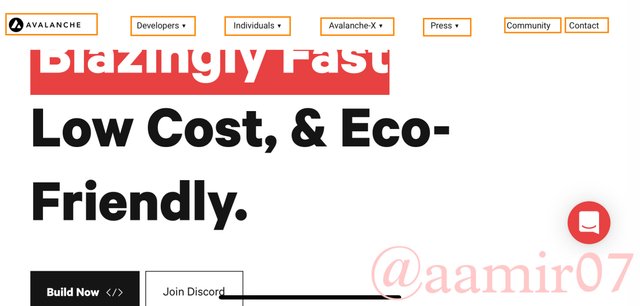
When we scroll down, there comes a comparison between Avalanche and other Blockchain networks.
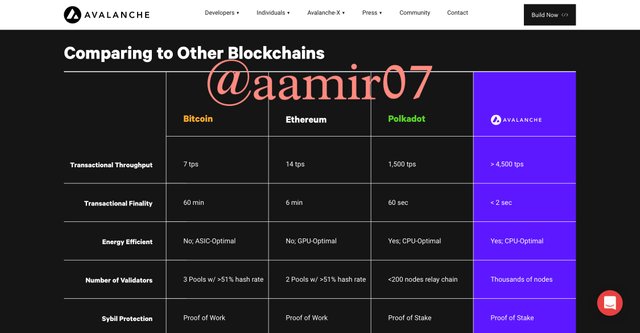
The Developers sections consists of two options ,the Validators and the Start Building options.
The Validators option gives us the Validators Stats and the Delegated Stake of the network.
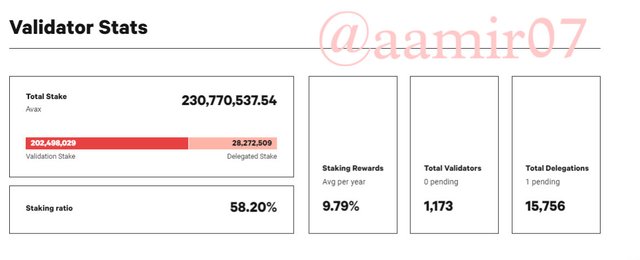
In start Building option,there is a collection of quick starts on Network like Launch your Ethereum dApp, Run a Validator, Mint a Token, Integrate and Exchange, and also the Developer Documentation.
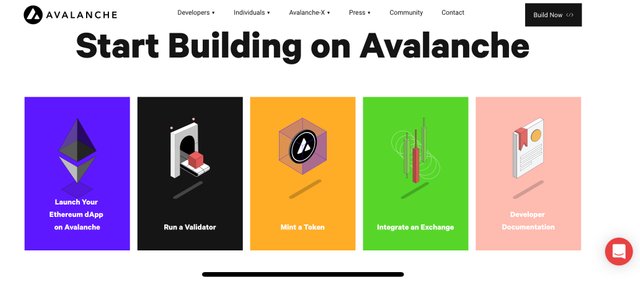
In the Roadmap section, there is a journey of the Avalanche network so far like milestones and projects of the network.
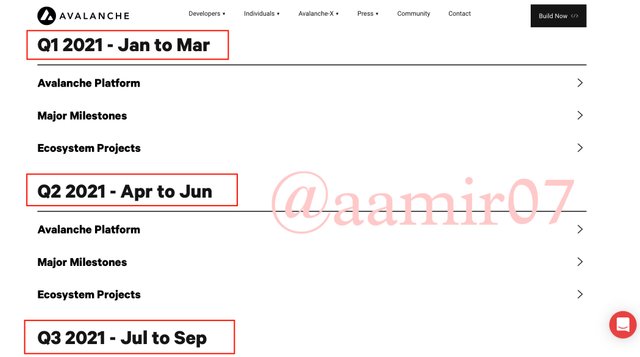
In the wallet section, we can create the Avalanche wallet on this platform by a very simple way.
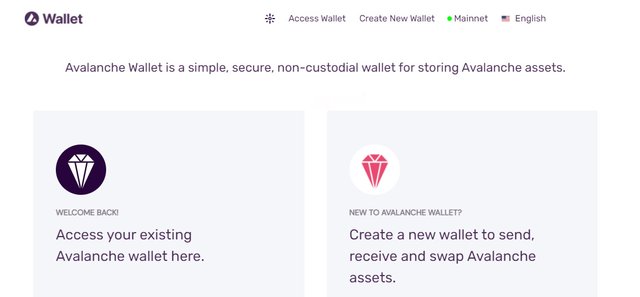
In the avalanche bridge section we can connect the avalanche protocol to different wallets like metamask, trust wallet.
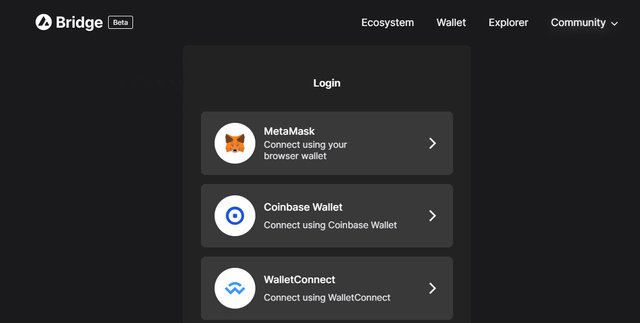
In the explore grants feature of avalanche protocol users or developers can build different Open Grants like DEXs, Lending, StableCoin, Synthetics and Derivatives, Volatility Index (VIX).
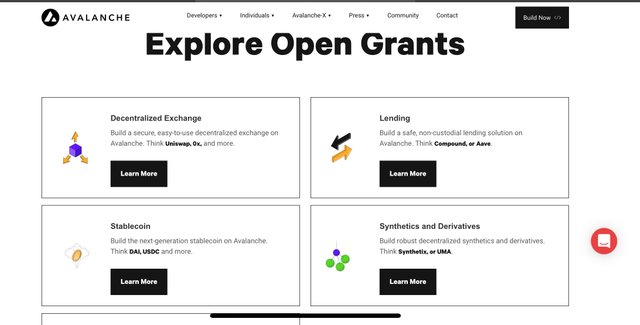
In Submit a General Proposal section, users can submit a proposal that can be beneficial for the protocol.
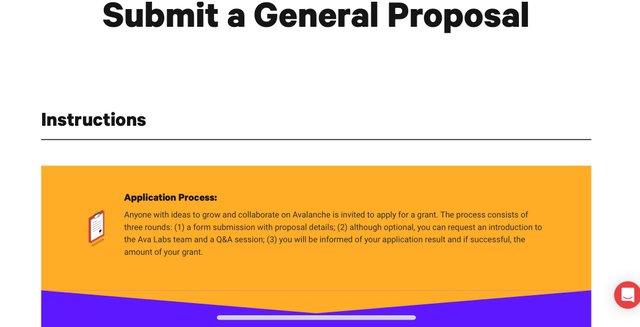
Show the last contract verified in the C-Chain network and show the Smart Contract that was generated at that address.
After visiting to the official site of SnowTracewe can see the interface like below at the it's homepage...click on the blockchain to see the verified block and contracts.click on verified contracts firstly.
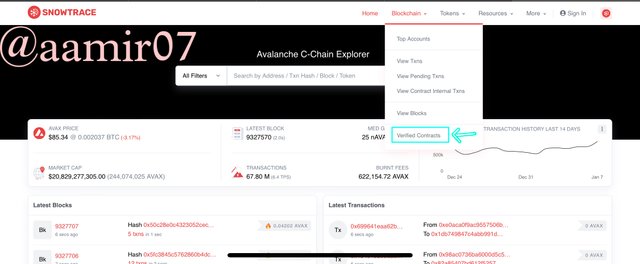
Click on the latest verified block,on the C-chain. and we'll be redirected to another page loaded will all the details of the block.
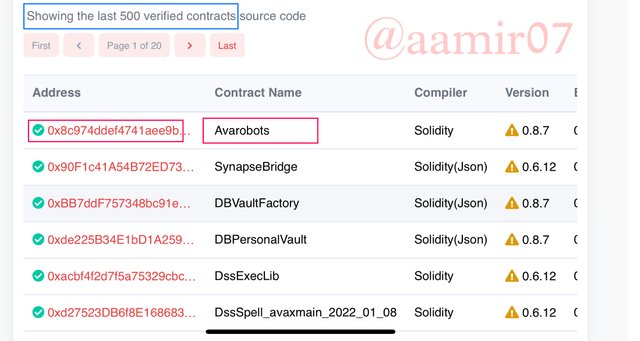
Contact Name: Avarobots
0x8C974dDeF4741AEe9b59C4727AA1b25480F1a705
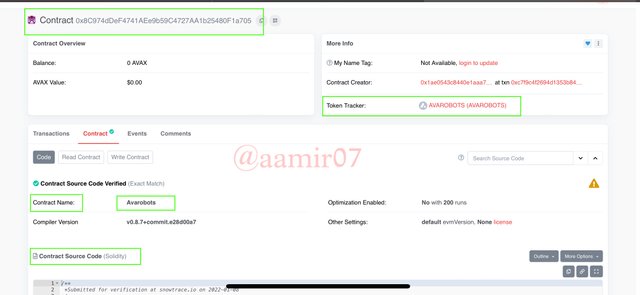
For more information, click on the transaction hash of the contract and get the details.
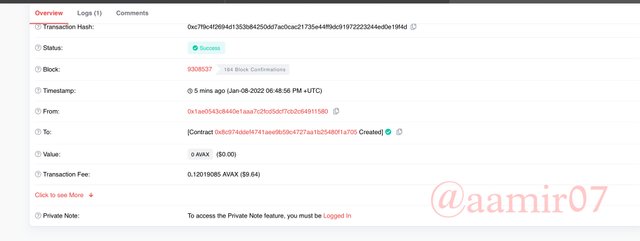
Explore the last block generated in the C-Chain network
Visit the same website as above SnowTrace and click on view blocks to see all the latest blocks in one place.
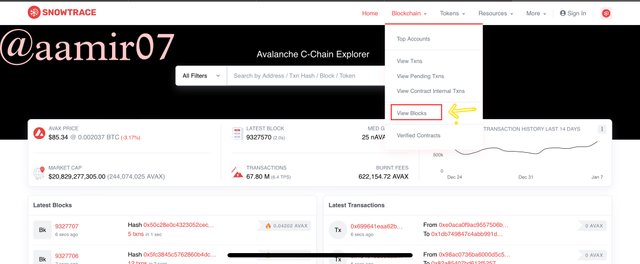
After that click on the the latest block from the shown blocks.
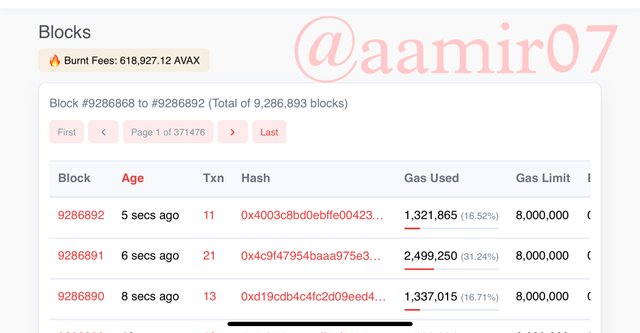
Latest block:-9286892
Once we click on the latest block, all the information about that block will be loaded in front of us...
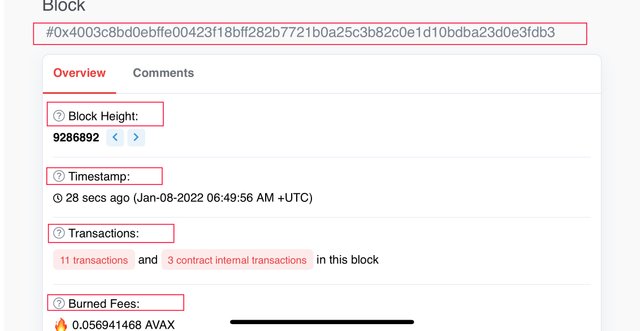
Block Height:9286892
Timestamp:28 secs ago (Jan-08-2022 06:49:56 AM +UTC)
Transactions:11 transactions and 3 contract internal transactions in this block
Burned Fees:V4 0.056941468 AVAX
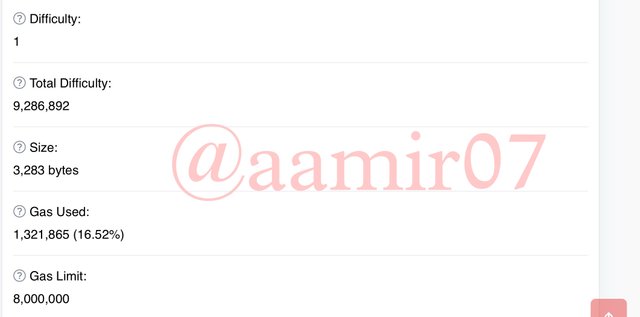
Difficulty: 1
Total Difficulty:9,286,892
Size:3.283 bytes
Gas Used:1,321,865 (16.52%)
Gas Limit:8 000.000
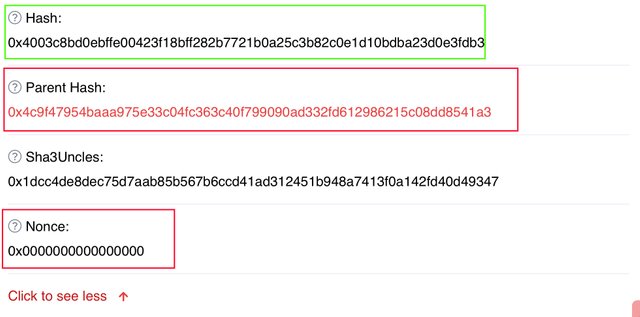
Hash:0x4003c8bd0ebffe00423f18bff282b7721b0a25c3b82c0e1d10bdba23d0e3fdb3
ParentHash:0x4c9f47954baaa975e33c04fc363c40f799090ad332fd612986215c08dd8541a3
Nonce:0x0000000000000000
Explain in detail the Avalanche consensus protocol and the Snowman consensus protocol.
The history of consensus protocols dates back about 45 years. Before Avalanche protocol there were already 2 consensus protocols being tested by the time and they are the classical protocol and Nakamoto consensus protocol. Scalability was the major issue that means unaddressed by both the consensus algorithms. Alongside the issue of scalability, the classical consensus was also lingering for robustness.
Avalanche Consensus Protocol:-As for temporality is concerned Avalanche stands at number three. Avalanche consensus was designed by an anonymous team named team rocket in 2018. Besides having the features of both the predecessor consensus algorithms, it was able to offer better scalability.
Avalanche is a probabilistic protocol with enhanced security and operational integrity. The enhanced scalability of Avalanche is because of the parallel arrangement of nodes and integration of multiple blockchains. The transaction speed of Avalanche is 4500 tps. The issued transactions are received by the validator(Stake weighed selection) to ensure validity and moved after validation to other nodes. The transaction is then subsampled and repeated randomly. The transactions are accepted after matching the confidence threshold.
Snowman Consensus Protocol:- It is not one more consensus protocol that is used on the Avalanche network. snowman protocol is a set of operational standards programmed to manage the smart contracts on the contract chain and subnets on the Avalanche. It differs from avalanche protocol in the arrangement of nodes. As mentioned above Avalanche has a parallel arrangement of nodes while the arrangement is linear in Snowman.
Conclusion:-
Avalanche is a versatile crypto project that combines multiple blockchains within it to solve the issue of scalability. The basic consensus algorithm is proof of stake as transactions are accepted or rejected on the basis of Stake Weighed Mechanism of validators.
Thanks @pelon53 for this wonderful homework task
